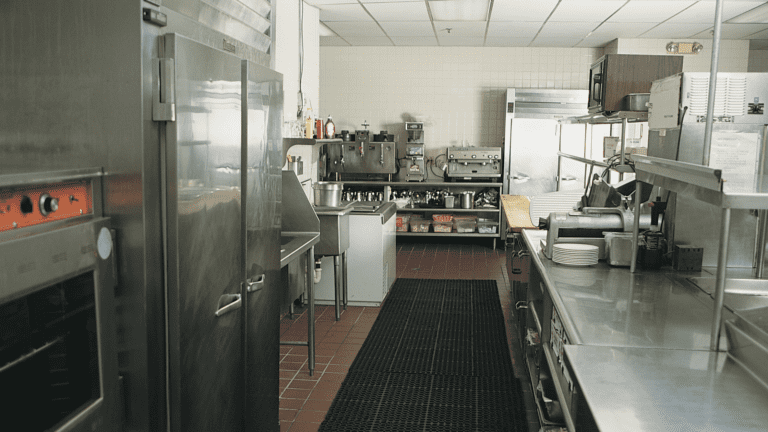 A walk-in cooler is the heart of any commercial kitchen. Your inventory depends on it, and so do all of your customers. When you’re having trouble with your walk-in, it’s crucial to get to the bottom of the issue as soon as possible. Problems can start out small and develop quickly.
A walk-in cooler is the heart of any commercial kitchen. Your inventory depends on it, and so do all of your customers. When you’re having trouble with your walk-in, it’s crucial to get to the bottom of the issue as soon as possible. Problems can start out small and develop quickly.
The decision to repair or replace a walk-in cooler isn’t always straightforward. Naturally, you want to control costs while maintaining the performance you need. As with any part of your commercial cooling system, maintenance can extend its life for years – but only up to a point.
Making the decision to replace at the right time can save you time, frustration, and money. Doing it too early, however, can subject you to unnecessary costs and a long turnaround time that can be disruptive to your operations. Many factors go into making the call at the appropriate time.
Here’s how to make the right decision to meet your business needs:
1. How Old is the Walk-In Cooler?
Your walk-in cooler shares some traits with any other refrigeration device. Regardless of size, it relies on a commercial compressor, possibly even a Copeland 2D or 3D series compressor. That means age is a big factor in performance. When your walk-in nears ten years of age, you can expect performance to start declining.
Most businesses will go forward with a replacement between the 8-12 year mark.
On the other hand, mechanical wear and tear can lead to component failure before the 10-year mark. In this case, it’s usually faster and less expensive to perform repairs. Only rarely will you find component failure that’s so severe, repair becomes prohibitively expensive.
2. Temperature Level Issues
Many walk-in coolers operate at a temperature level around 34°. The first thing to look into if there are difficulties maintaining the temperature is whether the thermostat itself is registering the temperature properly. Refrigerant levels are the next most likely culprit.
Remember that, just like a consumer freezer, your walk-in cooler depends on appropriate air flow to maintain a consistent temperature throughout the environment. How you pack and stack your food inventory in the walk-in can affect its temperature and energy usage.
3. Increased Energy Usage Over Time
Sometimes, performance may not be noticeably impacted, but the refrigeration equipment requires more energy to operate. Typically, this is related to the need to clean out the evaporator coil and condenser coil. Cleaning out fans and de-icing can also help with a walk-in cooler.
Increased energy use can point to necessary maintenance that’s being overlooked, but it rarely means the system needs to be replaced. Be sure your facilities plan includes the weekly, monthly, and quarterly tasks you’ll need to get the most out of your walk-in.
4. Performing Your Regular Maintenance Checks
Repairs are faster and less expensive when the equipment has been maintained carefully. Check the status of the evaporator coil monthly and ensure an appropriate level of defrosting.
Every six months, tighten electrical connections, caps, and screws, check the motors and blades, clean out the condenser coil and drain pan, and test the control systems, including defrost controls.
Remember that, while just about anyone can learn to clean out the walk-in, many of its parts are sensitive to handling. Connect with an expert team that understands commercial refrigeration. The money you save extending equipment life can easily pay for additional maintenance costs.
5. Time to Replace Your Commercial Compressor?
Short of completely replacing your walk-in cooler, replacing the compressor can often bring it back to “like new” condition. While replacing the compressor is an investment, it’s not the kind of harsh undertaking that buying and installing a totally new walk-in can be.
The compressor is the beating heart of the entire system. If the other components are in good working order, then getting a compressor gives the system a new lease on life. However, it is rare to need an all-new commercial compressor – a remanufactured compressor is a smart investment for your system and your budget.
A remanufactured compressor has been carefully disassembled and given complete attention to bring it to high-performance standards. Surfaces are cleaned and components replaced. When the system is re-assembled, it is tested to ensure it will operate reliably under real conditions.
No matter what issues you are noticing with your walk-in, it is a good idea to take action fast. Once performance problems arise, they will only get worse if not addressed. Problems in one area of the system will add strain to all of the others.
A sudden decrease in your walk-in’s output could point to an issue that can be resolved quickly … or it can mean the whole system is on the way out. Get a second opinion from a commercial refrigeration pro you trust. Being proactive can mean the difference between disruption to your business or having the new component you need on its way with minor distruptions.












